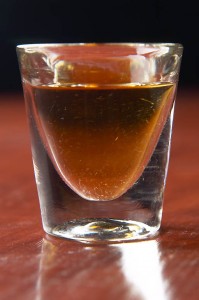 People like to drink. They enjoy beer, wine, and other alcoholic beverages. However, in the US there is a minimum age for the purchase and public possession of alcohol. We call this the “drinking age.”
People like to drink. They enjoy beer, wine, and other alcoholic beverages. However, in the US there is a minimum age for the purchase and public possession of alcohol. We call this the “drinking age.”
Historically, most states (with few exceptions) had no drinking age, meaning that anyone could make, purchase, and/or consume alcohol, regardless of age. In 1919, an amendment to the U.S. Constitution was passed, instituting a national ban on the sale, production, and transportation of alcohol. The passage of this 18th amendment was known as “Prohibition,” since it prohibited alcohol.
Prohibition was a social experiment that ended in failure, and in 1933 the 21st Amendment was ratified, repealing Prohibition. After the repeal of Prohibition, most states established a minimum drinking age of 21, which was the same as the age of majority (the age at which a person would be legally considered an adult).
The drinking age remained largely unchanged until the early 1970s, when some states lowered their drinking age – some to 18, some to 19, some to 20. This was no doubt influenced by the ratification of the 26th Amendment, which had lowered the voting age from 21 to 18 and essentially changed the age of majority to 18. In lowering the drinking age, some states placed additional restrictions on the 18 – 20 drinking crowd, such as limiting drinking in this age group to beer and wine but excluding hard liquor; other states imposed no restrictions. Not all states lowered their drinking ages, however. Of the fifty states, twelve states had a purchase age of 21 since Prohibition and never changed it. But from 1969 – 1976, a majority of states (30) had lowered their drinking age.
However, problems began to arise as a result of the lowered drinking age. 18-year-olds, some of whom were still in high school, frequently used their legal status to buy alcohol for their underage friends. Teen drinking became a huge problem with often deadly consequences, as many were involved in car crashes from driving under the influence of alcohol (driving drunk). Consequently, there was a push to raise the drinking age back to 21, and in 1984 the National Minimum Drinking Age Act was passed by Congress. This act required states to raise their purchase/public possession age to 21 by 1986; states that did not comply would lose ten percent of their highway funds.
It should be noted that the National Minimum Drinking Age Act only deals with the purchase and public possession of alcohol. Most states permit underage drinking in certain situations – for example, as part of a religious ritual (Communion) or under the supervision of a parent. But the drinking age effectively prohibits underage drinking.
Consequently, turning 21 is an important event to most young adults – they are able to drink legally. Many people celebrate their 21st birthday by going to a bar or a restaurant and imbibing. Of course, people who are not interested in drinking alcoholic beverages to begin with don’t bother with such drinking celebrations, and have a normal birthday party instead.
Because of the allure of “forbidden fruit,” many underage young adults try to get a hold of alcohol anyhow. Sometimes they might arrange to have someone over 21 purchase the alcohol for them (this is illegal, though), or they might steal alcohol from their parents’ liquor cabinet. But quite a number will attempt to get around the drinking age by making a counterfeit ID, and using this fake ID to get into bars or to purchase alcohol. Naturally, states try to counter this by making driver’s licenses and other government-issued IDs tamper-proof and/or difficult to counterfeit. But it seems like no matter how difficult it is to make a fake ID, there are those who figure out how to get around it somehow. However, most people comply with the law (more or less) and wait until they are “legal” before they try purchasing and consuming alcohol on their own.
